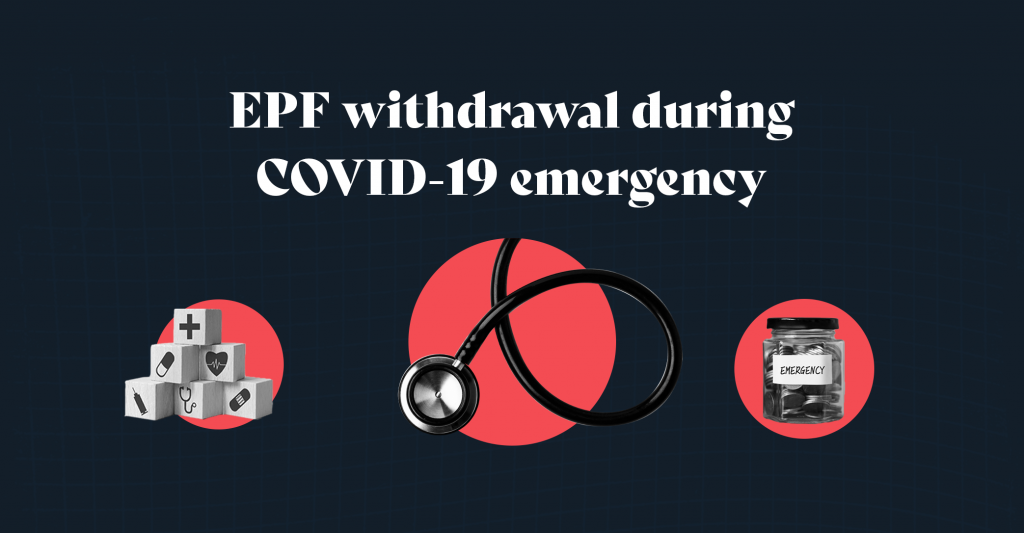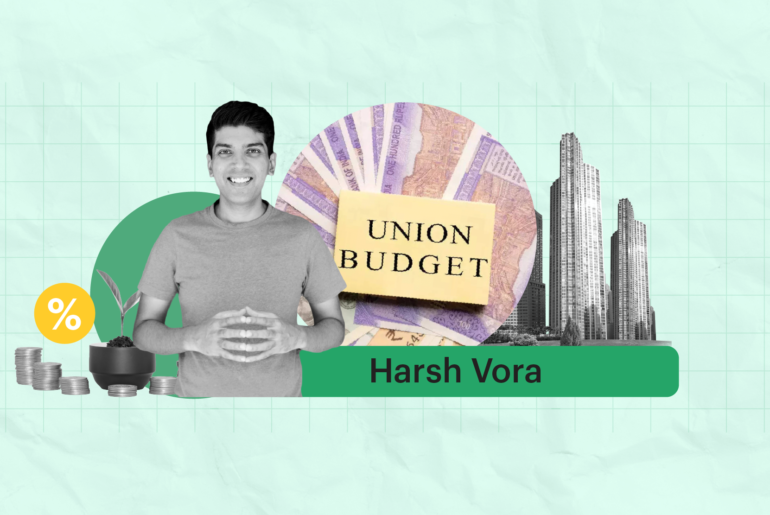Last Updated on Jul 15, 2021 by Manonmayi
An emergency sends no warning and COVID-19 has hit us in ways incomprehensible. When you have no savings for such situations, provident funds can play an important role. Your employer deducts 12% of your salary that goes to your Employee Provident Fund (EPF), which is offered by EPFO (Employees Provident Fund Organisation). Generally, you are only allowed to withdraw your EPF on retirement. However, due to the pandemic, a premature EPF withdrawal is allowed to help you meet your emergency expenses.
This article covers:
- When can you withdraw from your EPF account?
- Conditions to withdraw PF for COVID-related emergency
- Process of EPF withdrawal
- Documents required for EPF withdrawal
- Tax rules applied on EPF withdrawal due to COVID-19
Table of Contents
When can you withdraw from your EPF account?
As per the PF withdrawal rules, you are allowed to withdraw your provident fund on meeting any of the following criteria:
- At the time of retirement (on or after attaining the age of 58)
- If unemployed for two months continuously
- Death before the specified retirement age
EPFO also allows you to make premature PF withdrawal in cases such as a medical emergency, wedding, higher education, buying land or a home, and so on. This applies to coronavirus-related emergencies as well. Now that you are familiar with the PF withdrawal rules, let’s look at the implements you should know before withdrawing your funds for this purpose.
Conditions to withdraw PF for COVID-related emergency
According to the revised EPF withdrawal rules, you can withdraw:
- Three months basic salary (with no minimum service period) and dearness allowance
- 75% of the balance available in your EPF account
You can use your Employee Provident Funds to fund COVID-related treatment expenses. It’s applicable to yourself, your spouse, children, and your parents. However, coronavirus has not only affected the masses health-wise but has taken a toll on the livelihood of many. To offer help in a situation where a person has lost their job due to COVID-19, the government has allowed them to claim PF after declaring unemployment for a month. In such cases, a withdrawal of 75% of the EPF balance is allowed.
If you wish to withdraw EPF for reasons other than those related to coronavirus, you are required to meet the eligibility criteria as laid out by the EPFO. Now let’s take a look at how to withdraw PF.
Process of EPF withdrawal
PF withdrawal process is of two types: online and offline. However, given the current situation, consider submitting a withdrawal request remotely or from the comfort of your home. Let’s look at the two online methods to make a PF withdrawal.
1. Via the EPFO website
There are two prerequisites you have to comply with before opting for an EPFO claim online. They are:
- Your UAN (Universal Account Number) is activated and your registered mobile number is active
- Your UAN is linked with your KYC, that is Aadhaar, PAN, and your bank details
If this is done, you will not have to get your employer’s approval or attestation; you can get the withdrawal processed directly and the processing time is relatively faster. Once you submit the request, you can track your application status online via the EPFO website.
2. Via the UMANG app
Alternately, you can also submit your withdrawal request via the UMANG app. Below are the simple steps to follow:
Step 1: Launch the Umang app and select EPFO
Step 2: Choose the “Request for Advance (COVID-19)” option
Step 3: Enter your UAN and click on ‘Get OTP’
Step 4: Key in the OTP and click on the login
Step 5: Select the relevant member ID from the drop-down menu and enter the last four digits of your bank account number
Step 6: Click on “Proceed for the claim”
Step 7: Enter your address and click on ‘Next’
Step 8: Upload the image of a blank cheque leaf mentioning your account number and name
Documents required for EPF withdrawal
Now that you know the PF withdrawal process during a coronavirus emergency, take a look at some important documents and details you need to submit to your employer:
- Your UAN, which can be obtained from your employer
- Bank account details such as name of the bank, bank account number, and IFSC
- Any of your identity proof such as your Aadhaar card or PAN card
These documents will then be submitted to the EPFO by your employer along with other details such as the date of joining and exiting the organisation. Moving on, let’s take a look at the tax rules.
Tax rules applied on EPF withdrawal due to COVID-19
Generally, EPF withdrawal is tax-free only if you have worked for the company for five years continuously. However, since the motive behind allowing premature withdrawal of Employee Provident Fund is to offer liquidity during the pandemic, no tax or TDS is imposed on the amount.
It goes without saying that COVID-19 has affected the country on a rather serious note. And there is a need for financial support more than ever, especially during a global pandemic. The facility to make a premature withdrawal of the Employee Provident Fund has been a boon in such emergency situations.
- Top Fund of Funds (FOF) in India – Full Form, Types & More - Mar 28, 2025
- Bond Funds – Meaning, Types, Risks, and Benefits - Mar 27, 2025
- Money Market Mutual Funds: Meaning, Benefits, Liquidity and Taxation - Mar 13, 2025




